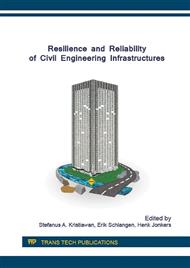p.359
p.364
p.369
p.379
p.385
p.394
p.404
p.408
p.416
Characteristics of Freight Transport Parking and Infrastructures Facilities of Sustainable Primary Arterial Road (A Case Study of Surakarta Ring Road - Central Java - Indonesia)
Abstract:
Freight transport parking on the sides of primary arterial roads directly declines road service function and indirectly increases cost which must be borne by road users due to reduced speed. Changes of land use, aesthetic value due to increased local activities are the continued impacts which must be faced. Provision of road infrastructure facilities such as rest area or freight transport terminals is a solution to solve parking on primary arterial roads. So that the implementation of the solution is optimum, the concept planning must consider the principle of sustainable transportation. The principle of sustainable transportation is finding short-term and long term solutions in various aspectsto improve efficient transportation system.Therefore, it’s important to determine the characteristics of truck parking to recommend appropriate infrastructure facilities.
Info:
Periodical:
Pages:
416-422
Citation:
Online since:
July 2016
Price:
Сopyright:
© 2016 Trans Tech Publications Ltd. All Rights Reserved
Share:
Citation:



